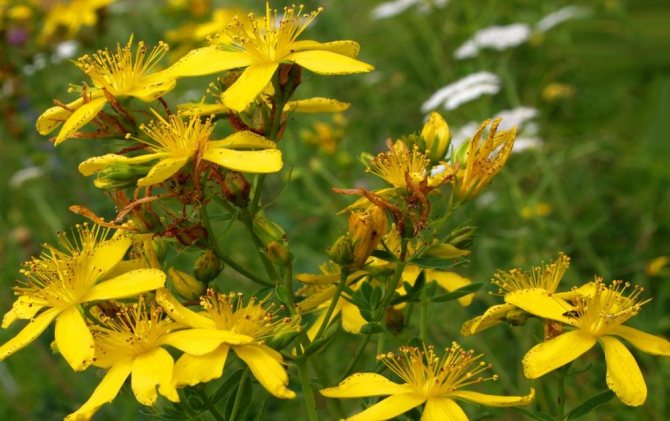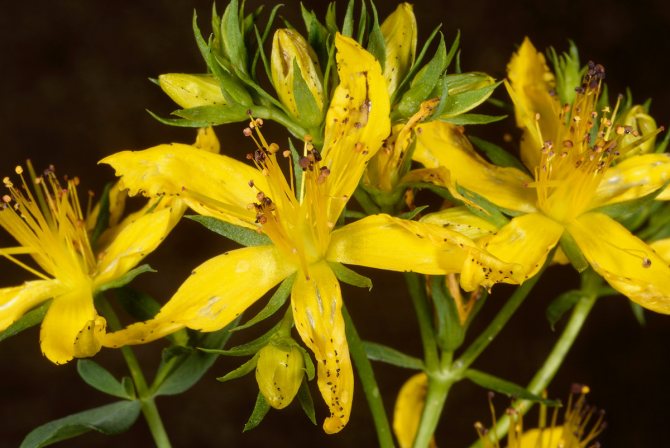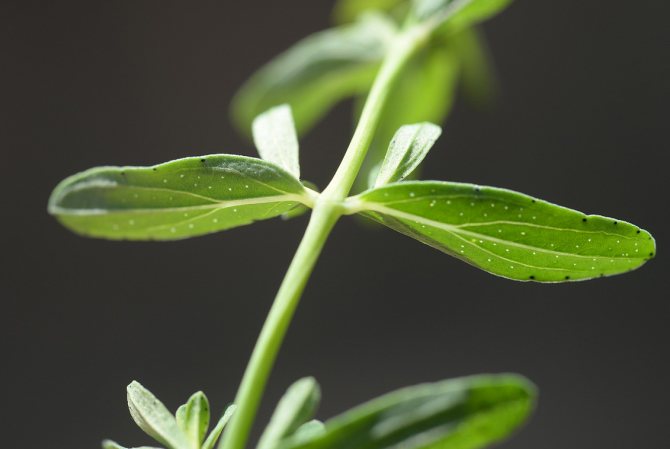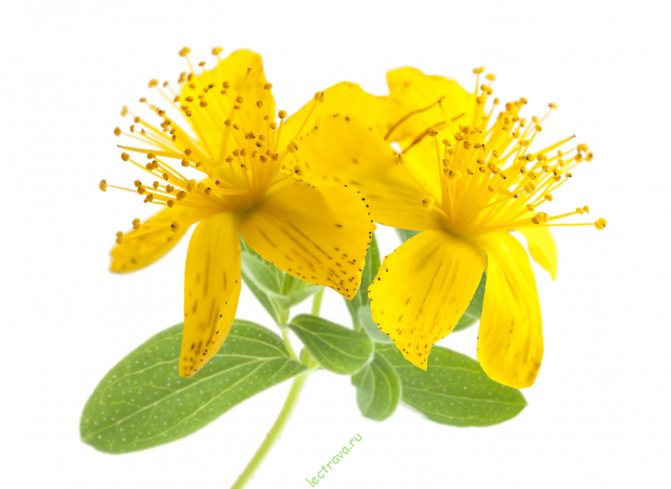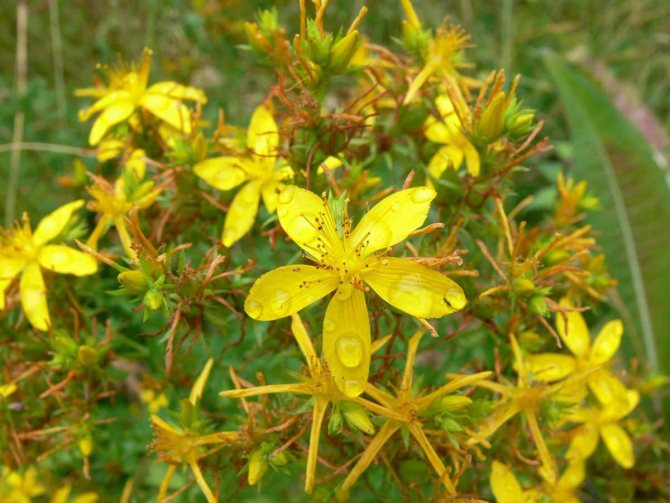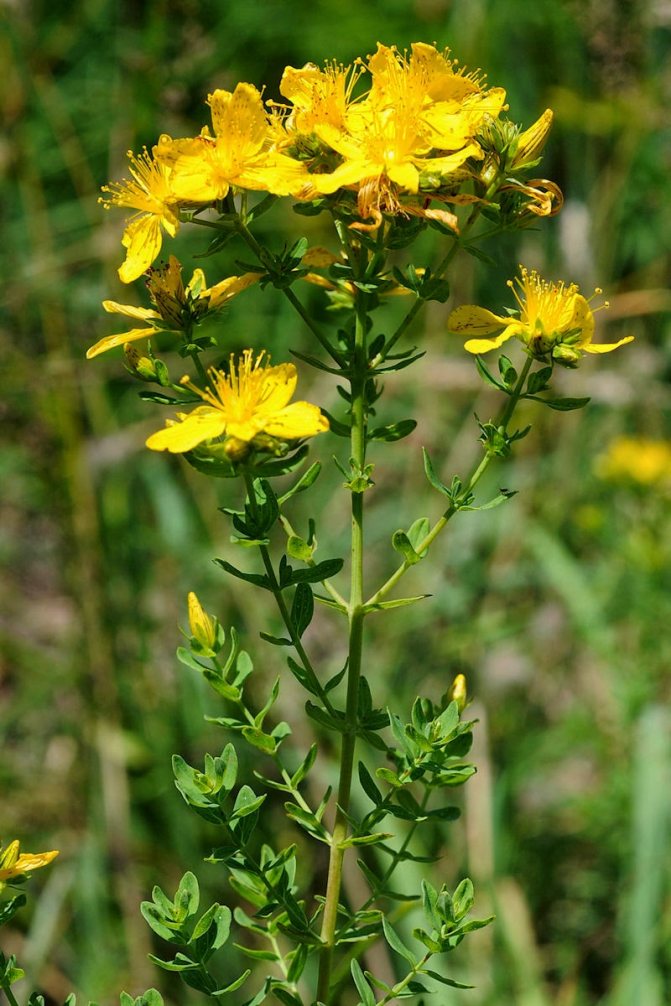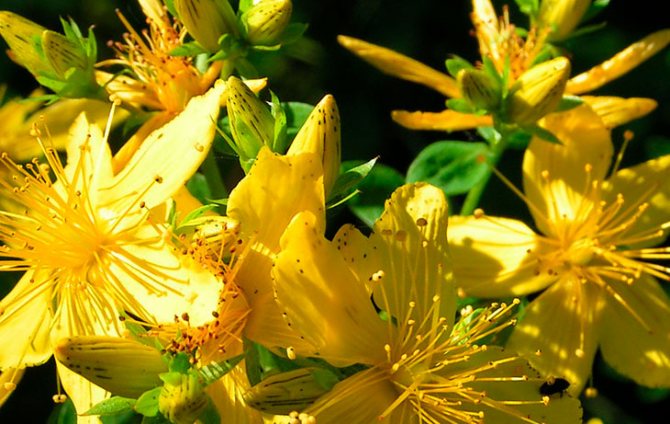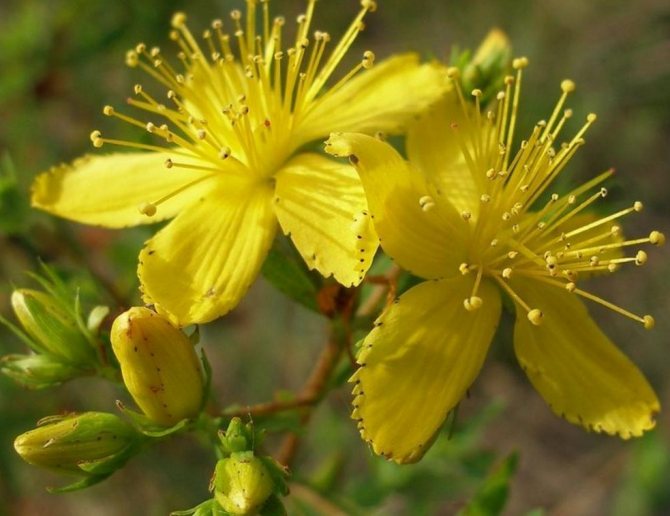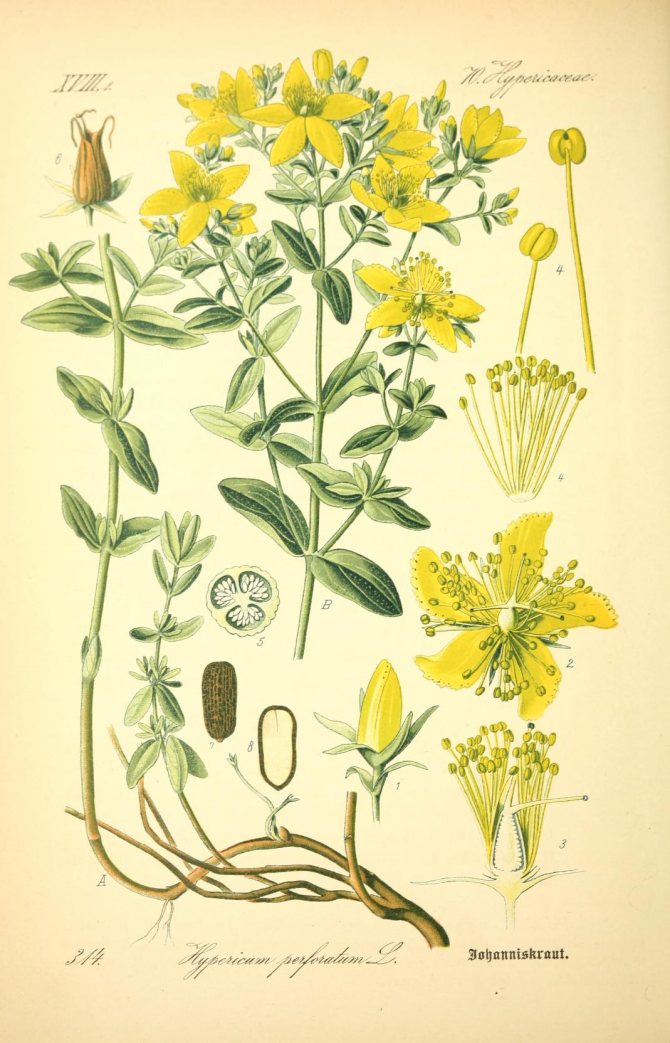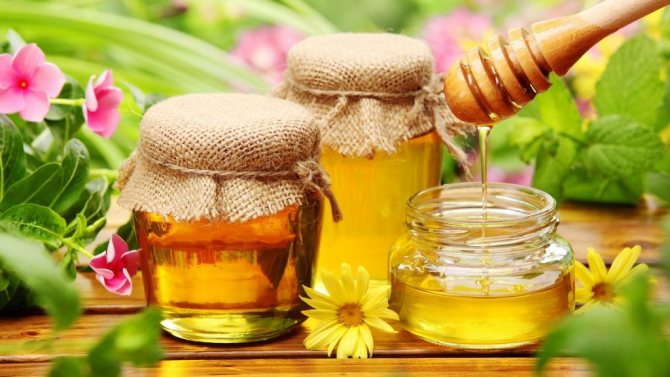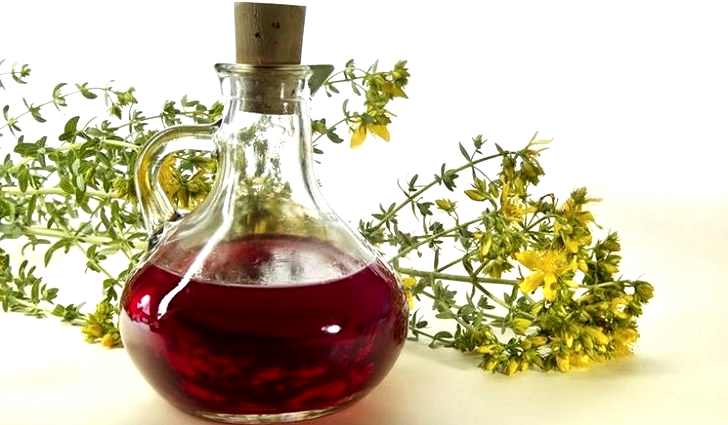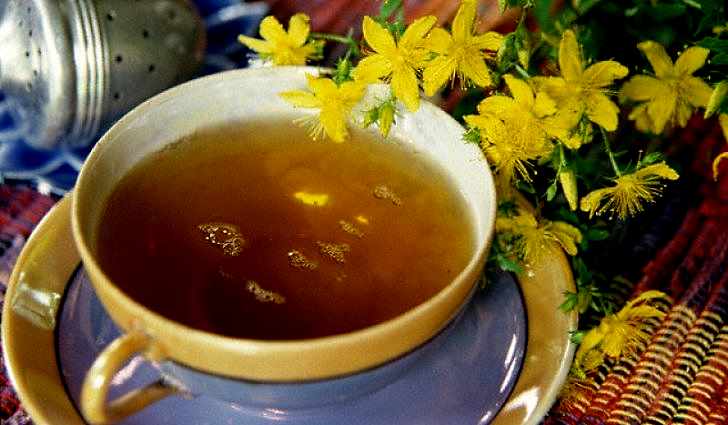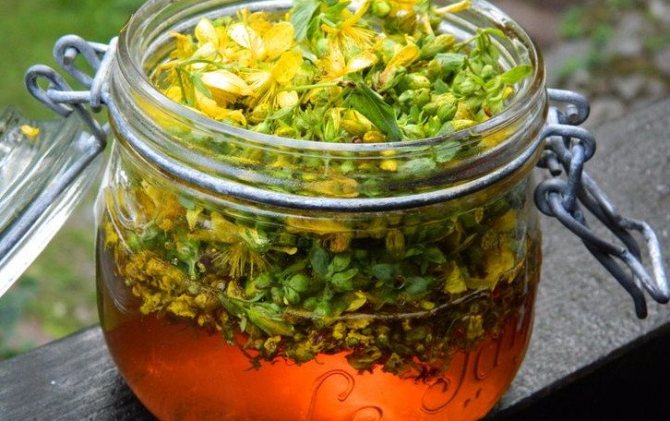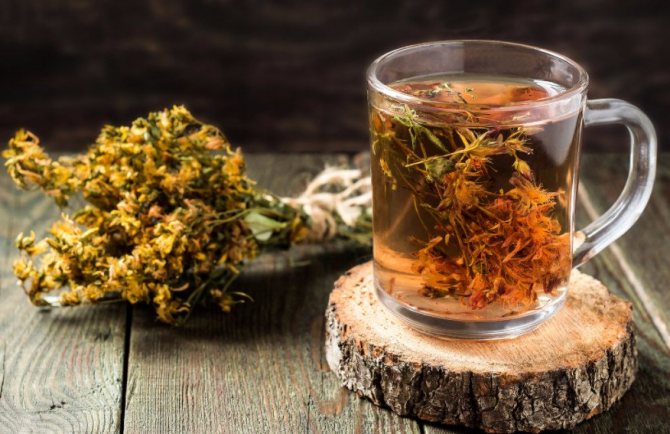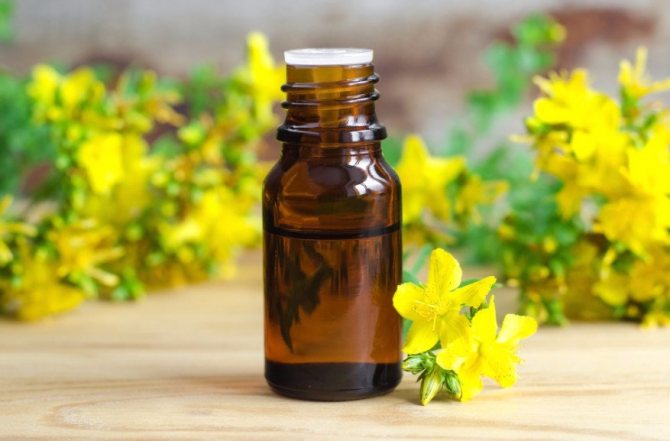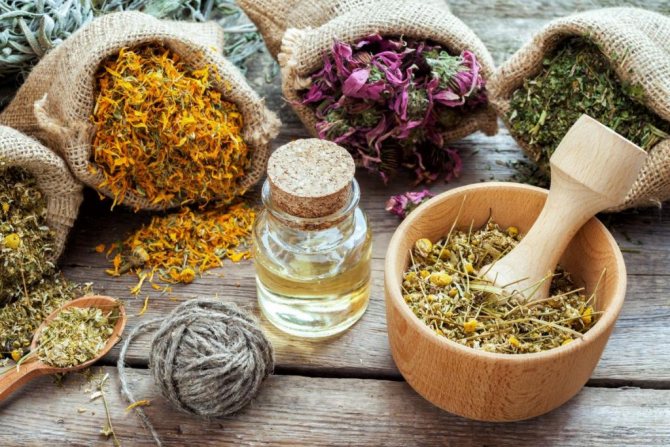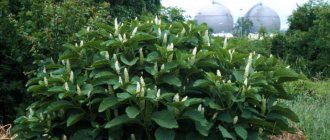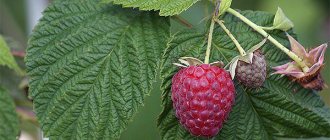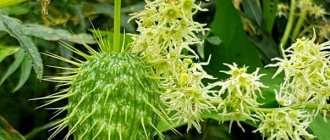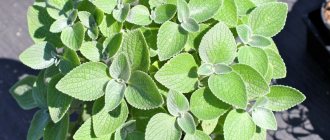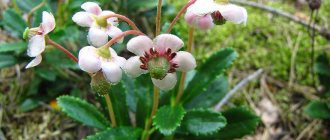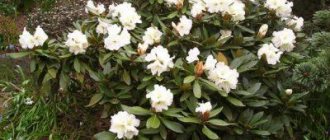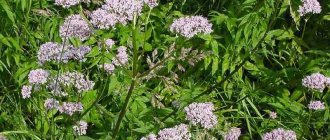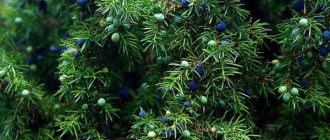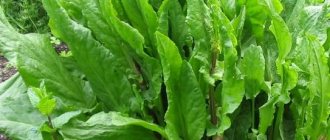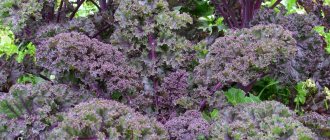Botanical description of St. John's wort
St. John's wort (ordinary) is a herbaceous plant of the St. John's wort family (Latin Hypericaceae). Botanical name - Hypericum... Generic name - St. John's wort.
Popular names - hare blood, St. John's wort, full of holes, St. John's wort, St. John's wort, red grass, blood man, blood, ailment, Svetoyanskoe potion. St. John's wort is a herb, up to 80 cm high with a branched thin rhizome and numerous adventitious roots. Stems are erect, slender, dihedral, branchy, glabrous. Leaves opposite, small, oval or oblong, entire, with translucent glands in the form of black dots, sessile. Flowers golden yellow with black dots, in dense corymbose inflorescences. Fetus - triangular box, opening with three leaves, with small seeds.
St. John's wort blooms in June - August. It grows in meadows, forest edges, in sparse deciduous and pine forests on sandy slopes, clearings, fallow lands, along roads in the southern half of the forest and in the forest-steppe zones of the Northern Hemisphere.
In Russia, there are several species of St. John's wort, of which the most common in European Russia are St. John's wort (Hypericum perforatum L.) and St. John's wort (Hypericum quadrangulum L.).
Both of these plants are perennial grasses with persisting rhizomes. The second type is distinguished by a tetrahedral stem. Both types are popularly considered medicinal, and preparations from these plants are used for many diseases.
Interesting to know!
In the Middle Ages, it was believed that St. John's wort was able to protect against evil spirits, ghosts and witches. He was placed with the child in a crib or hung from a cradle. It was believed that this way the baby would have good dreams, and the evil spirits would not scare him.
On the fresh grass of St. John's wort, the girls wondered for love: they crumpled the stems in their hands, if the juice appeared red, then the feeling was mutual, if colorless, then the chosen one was indifferent. Travelers took St. John's wort with them on the road, it was believed that he would protect from the attack of wild animals and robbers.
There are many legends about the origin of St. John's wort. So, among Christian peoples, its appearance is associated with the death of John the Baptist. When his head was cut off, St. John's wort grew in place of the drops of blood that had fallen to the ground. Therefore, according to the Slavic tradition, this plant is called "Ivan's blood".
↑ Distinctive features of other similar species of St. John's wort
St. John's wort tetrahedral
, or
St. John's wort four-winged
(lat.
Hypericum quadrangulum
) - especially similar and growing in the same places as the common one, the stem is tetrahedral (in the common one with two lateral ribs), the sepals are not sharp, but obtuse and, moreover, are almost equal in length to the ovary.
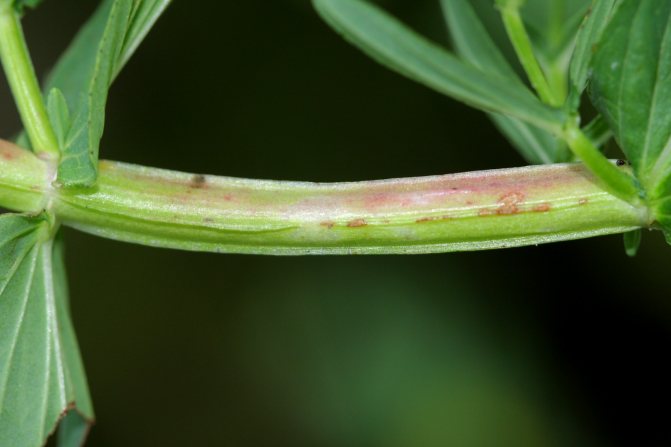
St. John's wort rough
, or
St. John's wort rough
(lat.
Hypericum scabrum
) - stems are cylindrical, abundantly fluffy, leaves are also densely pubescent; sepals with glandular cilia (look through a magnifying glass).
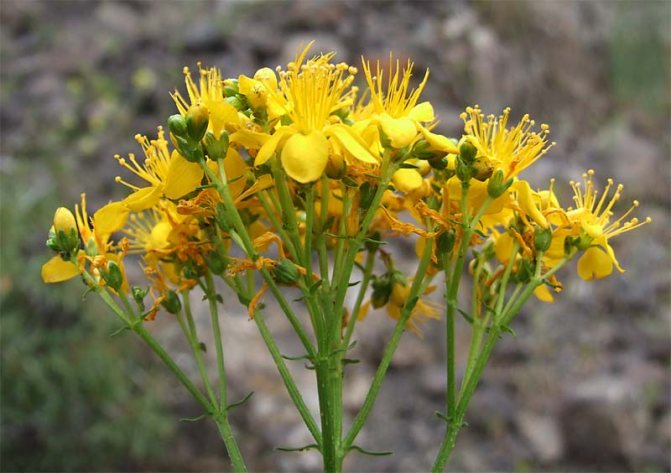

St. John's wort graceful
(lat.
Hypericum elegans
) - a stem with two raised leaves (ribs), but the sepals are not glabrous, but along the edges with glandular hairs (look through a magnifying glass). According to GOST 15161—69.
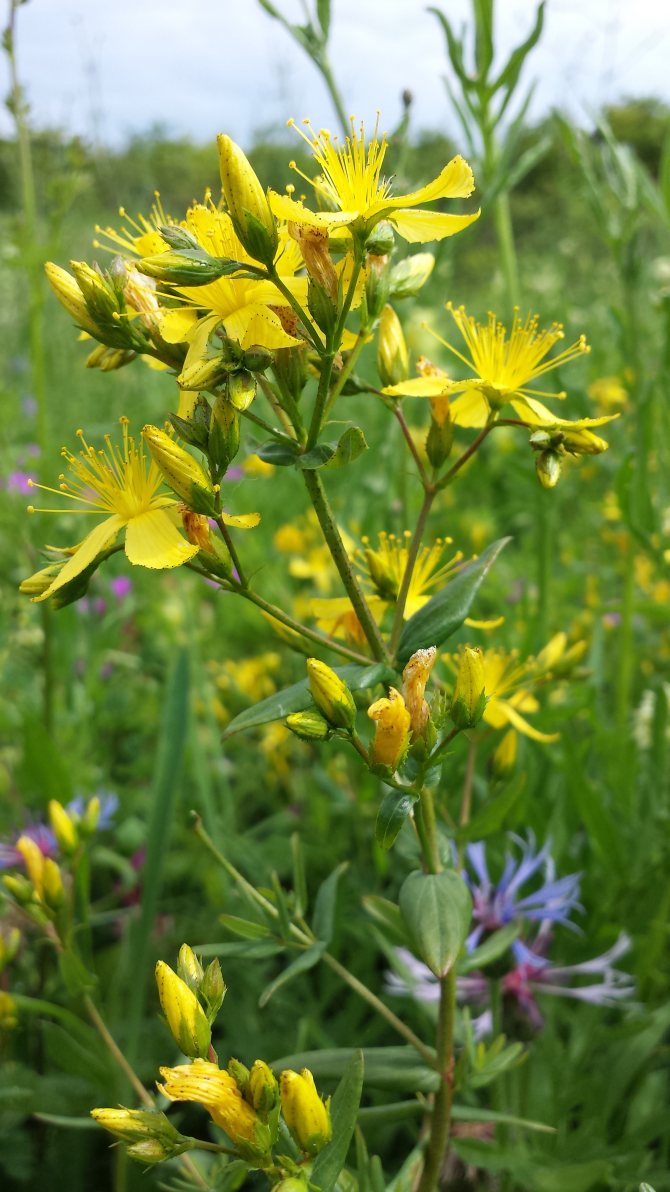

According to The Plant List, the genus St. John's wort includes 458 species.
Composition and useful properties of St. John's wort
St. John's wort contains many useful substances, due to which it has healing properties. The plant contains tannins (10-12%), flavonoids (hyperoside, rutin, quercitrin, myricetin, leukoanthocyanins), saponins, dyes (hypericin - 0.1-0.4%, pseudohypericin, hyperin, frangulaemodinanthranol), essential oil (0 , 2-0.3%), resinous substances (17%), carotene, ascorbic acid.
Since ancient times, extracts from the herb St. John's wort, prepared in water, have been used to treat heart diseases, rheumatism, colds, flu, headaches, diseases of the liver, stomach, bladder, bedwetting, hemorrhoids, inflammation of the female genital organs.
And only recently, medical scientists discovered another useful property of St. John's wort. Clinical studies have shown that the plant has a positive effect on the nervous system and has an antidepressant effect. This makes St. John's wort even more valuable, since it has almost no contraindications and does not cause side effects, unlike sedative drugs of chemical origin.
St. John's wort composition:
✅ 1. Vitamin C increases immunity, promotes the restoration and renewal of cartilage, ligaments, maintains skin turgor, prevents the degeneration of normal cells into cancerous ones;
✅ 2. Carotene is a precursor of vitamin A. It is necessary for the proper functioning of the eyes, renewal of skin cells, fight against viruses and bacteria;
✅ 3. Tannins help cleanse wounds from infection, relieve inflammation, accelerate healing;
✅ 4. Nicotinic acid is essential for the proper functioning of the heart and nervous system;
✅ 5. Tocopherol is vitamin E, which is necessary to protect the body from the damaging effects of free radicals;
✅ 6. Phytoncides - plant "antibiotics" that have a powerful antimicrobial effect.


Read more ...
✅ 7. Hypericin and hyperforin are special substances that have an antidepressant effect;
✅ 8. Hyperozide and rutin strengthen the walls of blood vessels;
↑ Preparation from St. John's wort imanin
Ukrainian academician Viktor Grigorievich Drobotko and his students received a good drug from phytoncides of the St. John's wort plant, called imanin.
St. John's wort is an ancient folk medicinal plant. Decoctions and infusions from it were used to treat gastrointestinal diseases. In a very simple way, you can get a phytoncidal drug from plant tissues - imanin. It is a dark brown powder; he is not afraid of strong heating. Imanin is not just one substance, but a whole complex: tannins, chlorophyll and others. Its solution in water has medicinal properties.
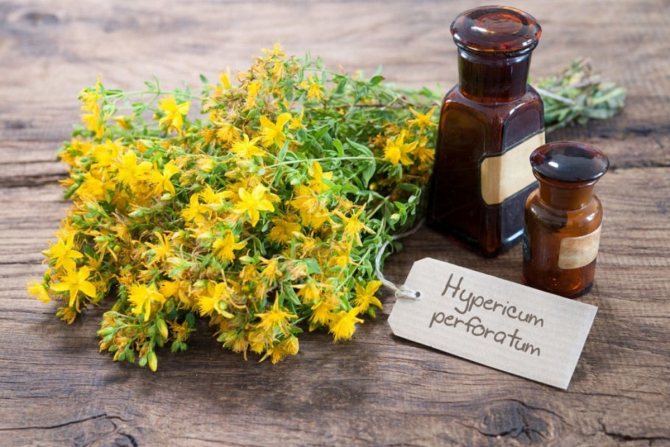

Scientists have proven the bactericidal effect of imanin on forty types of microorganisms - on staphylococci, streptococci, the culprits of dysentery, tuberculosis, whooping cough and many other bacteria. So, after 4 hours, regardless of the number of staphylococci, diphtheria and pertussis microbes, they all die under the influence of imanin. Fungi do not lend themselves to the action of imanin.
They are resistant to imanin and protozoa, they multiply even better in its solutions, however, in the case of low concentrations. Doctors are interested in the properties of imanin, besides, it can be given to a sick body in very convenient forms - both in the form of solutions (in water, alcohol), and in the form of ointments, and in the form of a powder. Various diseases can be treated with imanin. Acute rhinitis disappears within a few hours after giving the patient imanin. Imanin is successfully fighting purulent ear infections, and doctors have achieved especially striking success in the treatment of burns. Imanin helps to restore lost tissue. When treating burns with them, no disfiguring scars remain.
Science knows the fact that Imanin saved a person after a very severe burn.But a misfortune happened to a two-year-old child: the entire lower half of the body and both legs were scalded with boiling water. One third of the entire body surface was burned! In a very serious condition, the child was taken to the hospital: with a temperature of more than 39 degrees, with a pulse of 130 beats per minute and with poor blood condition. Imanin treatment was started immediately. Already on the third day, the skin condition improved, the temperature and blood became normal, and after 12 days the body, with the help of imanin, completely coped with the severe damage of a third of the entire body!
Pharmacological action and application of St. John's wort
St. John's wort herb has an antispasmodic effect on the smooth muscles of the whole body and blood vessels, stimulates regeneration processes. Its astringent, diuretic, tonic, hemostatic, antiseptic and anti-inflammatory beneficial properties are also in demand.
St. John's wort used for gastritis, enteritis, colitis, cholecystitis, biliary dyskinesia, hepatitis, cholelithiasis, flatulence.
St. John's wort effective in treating inflammation of the kidneys and bladder: it tends to remove excess fluid from the body during its retention and reduced filtration capacity of the kidneys.
The photosensitizing properties of the herb are indispensable in the treatment of depigmentation in vitiligo.
Water infusion is used for gargling with gingivitis and stomatitis, as well as for the treatment of tonsillitis, tonsillitis and other inflammatory diseases of the throat and upper respiratory tract.
Read more ...
ethnoscience applies St. John's wort even more widely. The herb is used as an antidepressant for neuroses and insomnia, as a wound-healing and anti-burn agent for purulent and non-healing wounds. For women, St. John's wort is considered a remedy that treats inflammation, causes menstruation and relieves premenstrual syndrome. Serves as a remedy for sinusitis and runny nose, anemia, otitis media, joint pain. Included in the collection from alcoholism.
St. John's wort tea serves as a general tonic. In men, it has a beneficial effect on potency. The same tea stimulates the work of the cardiovascular system, regulates the activity of the central nervous system, digestive system, endocrine glands. It is not recommended to take St. John's wort for hypertension, as it increases blood pressure.
The herb St. John's wort is used for weight loss. It is drunk in the form of an infusion or as part of tea for weight loss. The use of St. John's wort improves digestion, removes excess fluid, reduces appetite and soothes.
Traditional medicine recipes
St. John's wort is used in the form of a tincture, infusion, decoction and tea, as well as oils that are easy to prepare at home. The raw material is the dried herb of the plant, bought in a pharmacy or harvested independently.
Hypericum infusion: to prepare the infusion, you need to take 2 tablespoons of chopped fresh herbs or 1 tablespoon dry, and pour 200 ml of boiling water over it. Insist 3-4 hours in a dark place, after which the agent can be used 15 ml 3 times a day before meals to get rid of gastritis, normalize the acidity of gastric juice, with colitis, cystitis, gallstone disease, headache, to improve venous circulation, increase blood pressure, etc. In case of colds or infections of the oral cavity, rinse from the infusion of St. John's wort is used. For the treatment of inflammation on the skin, lotions or compresses are prepared with the same remedy. The infusion is used to treat skin diseases in children, adding it to the bath when bathing.
St. John's wort decoction: it is used in much the same way as infusion. To prepare the broth, you need an enamel pan or heat-resistant glass dish. Take 1.5 tablespoons of the herb and fill it with a glass of hot water.Then the container with the brewed herb is heated in a water bath for 20-30 minutes, but not boiled. A decoction of St. John's wort is used externally for washing, wiping the skin, rinsing hair, inside - for intestinal infections, diarrhea.
Hypericum tincture: John's wort herb is insisted on vodka or alcohol in a ratio of 1: 7 or 1:10, left in a dark place for three days or more. The drug should be consumed by mixing with water: one teaspoon per 50 ml of water. This medicine is also used for rinsing the mouth and for inhalation. Alcohol tincture is very effective as a warming compress for muscle or joint pain.
For external use prepare an ointment or oil. Such a remedy promotes the healing of wounds, ulcers, bruises, sprains, etc. An ointment is prepared by mixing animal fat, petroleum jelly or oily baby cream with evaporated St. John's wort extract or dry herb powder.
St. John's wort oil: It can be prepared as follows: take one part of the flowers and infuse in two parts of olive, almond or peach oil for three weeks. This drug is used as oil compresses to treat ulcers, burns or wounds. To prepare the medicine, you can take ordinary vegetable oil, add dried herb and infuse for 5 days (in a ratio of 1: 1.5). If the healing oil is prepared on the basis of fresh herbs, then the proportions of 1: 1 are observed. In the villages of Siberia, such oil is widely used to treat gums and oral mucosa (in the case of stomatitis or gingivitis).
Hypericum tea. It is prepared in the same way as a hot infusion. 1 teaspoon of St. John's wort is poured into the teapot and poured with 1 glass of boiling water. The color of linden, a spoonful of honey or a handful of strawberries can be added to the tea. Tea is used not as a therapeutic, but as a prophylactic agent to strengthen the immune system.
Application in cosmetology
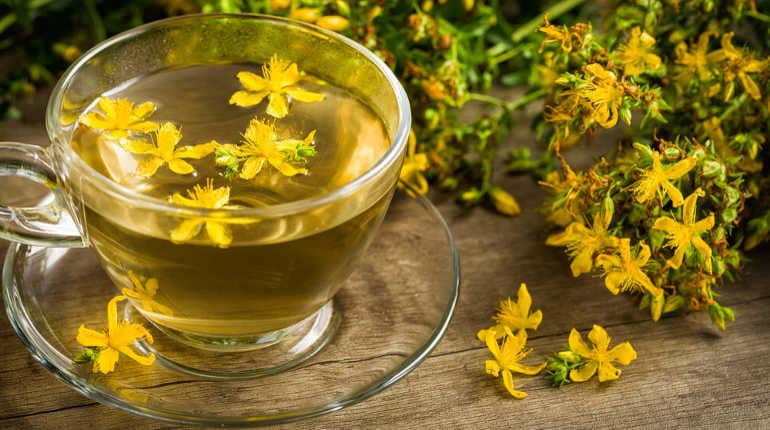

The area of application of St. John's wort is not limited to traditional medicine, the herb is also used in cosmetology. The plant helps to solve skin problems.
Acne
In case of unexpected acne:
- Dilute 1 tablespoon of St. John's wort in 1 cup of boiling water.
- Leave the mixture for 20-25 minutes.
- Use for washing.
The procedure is best done at night, while not getting your face wet with a towel and trying not to get into your eyes.
Oily skin
In the fight against oily skin, a decoction of St. John's wort is needed.
Ingredients:
- 2 tbsp. spoons of flowers;
- 100 ml boiling water.
Preparation:
- Pour dry flowers with water.
- Put on fire.
- Boil.
- Boil for 10-15 minutes.
- Allow to cool.
- Strain.
The broth is wiped off the skin. Upon completion of the procedure, they wash themselves with cold water.
Baldness
St. John's wort is especially useful for men. The plant, together with chamomile, is ideal in the fight against hair loss.
Ingredients
- 1 tbsp. l. dried St. John's wort;
- 1 l. water;
- 3 tbsp. l. dry chamomile.
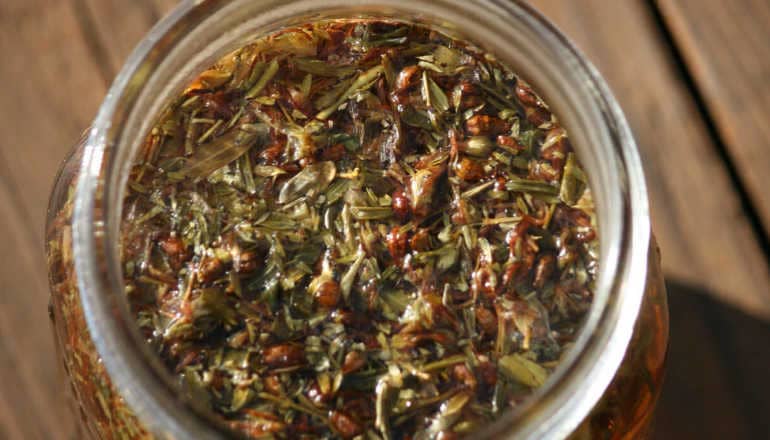

How to cook:
- Bring the water to a boil.
- Add St. John's wort herb.
- Boil for 15 minutes.
- Remove from stove.
- Fill a glass with a portion of the mixture.
- Dilute chamomile in it.
- Pour into the rest of the broth.
- Insist for a day.
- Strain.
Rinse your head with infusion every evening. The course of treatment is 2 weeks.
Cracked heels
If cracks appear on the heels, it is recommended to make foot baths based on a decoction of plant flowers. To prepare the medicine:
- 4 tablespoons of dried herbs pour 0.5 liters of boiling water.
- Cook over low heat for 4-5 minutes.
- Cool to an acceptable temperature.
- Pour into a deep basin.
Lower the legs into the pelvis and hold in this position until the medicine cools completely.
Precautions and contraindications
The high concentration of active substances has earned St. John's wort a reputation as a low-toxic plant, therefore, its treatment requires caution and accuracy in dosages.In general, St. John's wort, the beneficial properties and contraindications of this plant, the action and description of individual ingredients are not yet completely clear. It must be remembered that even in the absence of allergies, St. John's wort can be not only beneficial, but also a number of side effects, namely:
- 1. The possibility of increasing blood pressure, which requires strict control of this indicator during treatment;
- 2. Photosensitization, due to which it is impossible to combine the intake of this herb and exposure to the sun;
- 3. Incompatibility with some groups of drugs, in particular, with contraceptive pills, antibiotics, anticoagulants, certain types of antidepressants and heart drugs;
- 4. At the end of a long course of treatment, men may experience a temporary weakening of potency;
- 5. Substances contained in St. John's wort can cause transplant rejection;
- 6. Women taking birth control pills should remember that St. John's wort reduces their contraceptive effect, therefore, an unwanted pregnancy is possible;
- 7. Anesthesia, which is carried out while taking drugs of this plant, can have both weakened and too strong effect;
- 8. The plant causes an increase in blood pressure, therefore, patients with hypertension should consult a doctor before starting treatment with this herb;
- 9. In patients with mental illness, this herb can exacerbate the manic syndrome. The same effect can occur while taking St. John's wort with other antidepressants. Patients may experience hallucinations, convulsions, confusion, and in severe cases, coma may occur.
In any case, taking St. John's wort should not last more than a month - otherwise the benefit, especially for men, may be less than the harm.
It is important for expectant mothers to know that St. John's wort during pregnancy and lactation is contraindicated for oral administration, but it does not cause any harm when applied topically.
The instructions for pharmaceutical preparations containing St. John's wort do not recommend taking them to children under twelve years of age. At the same time, traditional medicine advises drinking St. John's wort tea (preferably collection with its inclusion) for children from five years old in case of diarrhea, but, of course, not constantly and in a weaker concentration.
What it looks like and where it grows wild
St. John's wort belongs to perennial herbaceous plants. It has a thin but powerful rhizome that can grow quite deep. Every year in the autumn period, the upper grassy part dries up, and with the arrival of spring it grows again. Thin stalks extend from the rhizome. When the flowering period is just beginning, they attract attention with a bright green color, but over time their color turns reddish-brown. The stem can have different heights - from 40 cm to 1 m.
Important! Do not self-medicate. The use of drugs based on St. John's wort is possible only after visiting a doctor and making an accurate diagnosis. Otherwise, you can seriously harm your health.
The plant has a smooth but uneven stem. Several internodes and faces can be seen on it. Perforated St. John's wort has 2 faces, which are located opposite each other, and make an angle of 90 degrees with internodes.
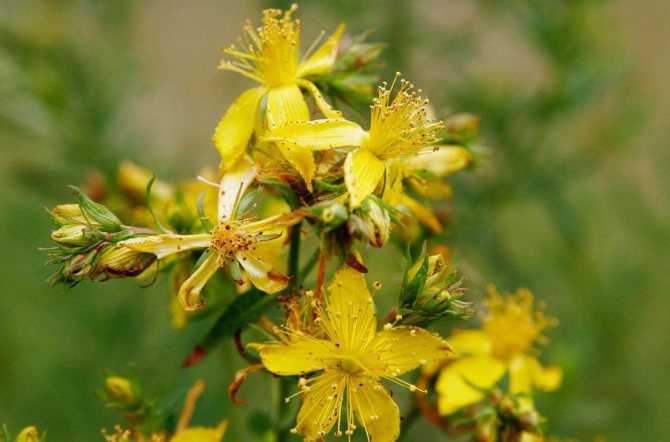

Depending on the signs, more several species of this plant:
- spotted - has 4 edges (edges) on each stem;
- rough - there are small hairs on the stem, but the ribs are completely absent;
- mountain - whitish corners in the form of a cannon are located on the stem, there are no ribs.
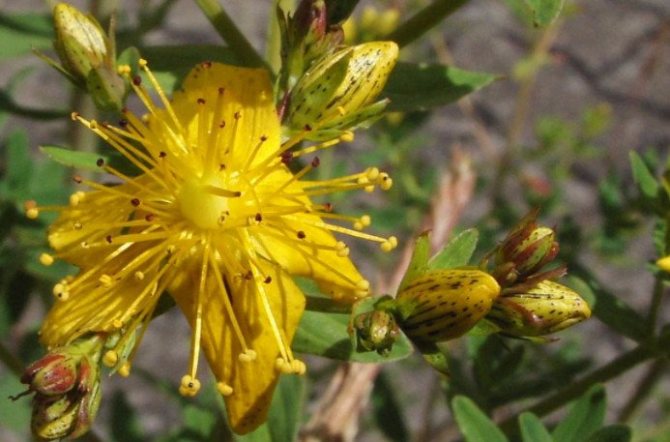

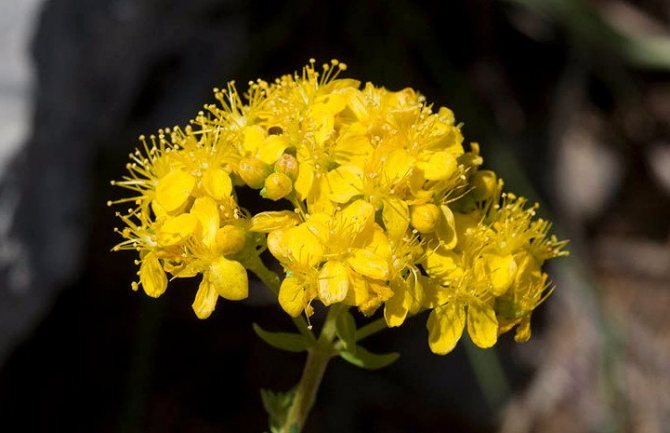

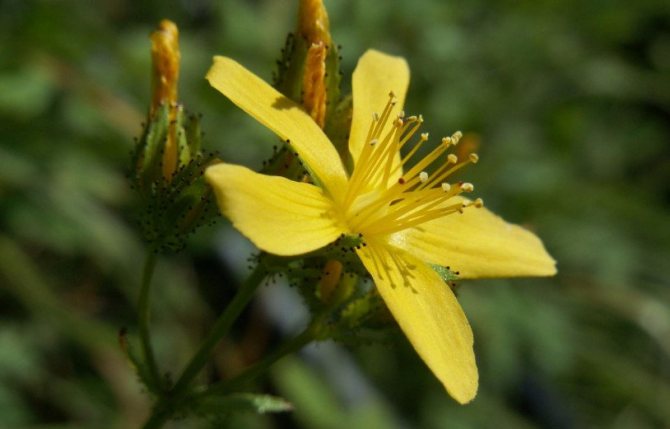

Foliage has an elliptical or oval shape, small in size. The maximum length of the leaves is 3 cm, the width is 1.5 cm.
The plant blooms for a long time, and this time falls during the period from June to August.After that, bolls begin to form on the stalks, which contain seeds.
Sunny areas are ideal for the growth of St. John's wort. St. John's wort can be found in meadows, forest edges, glades, near roads. A large number of the plant grows in the Caucasus and Crimea.

